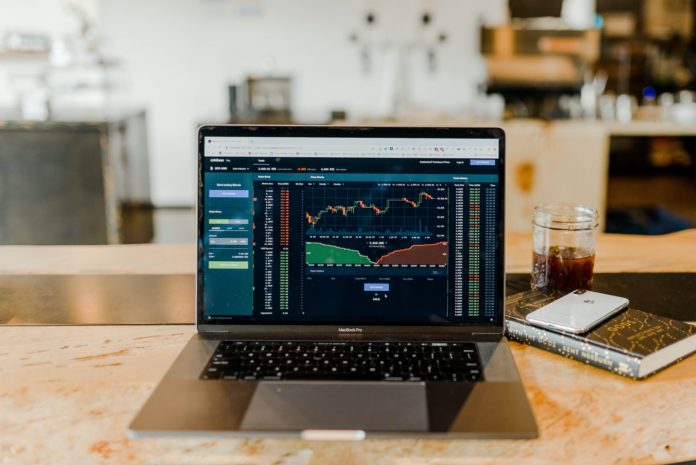In the fast-paced world of foreign exchange trading, having the right trading platform can make all the difference. With numerous options available, finding the one that suits your needs can be daunting. This article serves as your comprehensive guide to understanding Forex trading platforms, helping you make an informed decision. Let’s dive in.
Table of Contents
- Introduction to Forex Trading Platforms
- Understanding the Basics of Forex Trading
- Types of Forex Trading Platforms
- Web-based Platforms
- Desktop Platforms
- Mobile Platforms
- Key Features to Look for
- User-Friendly Interface
- Charting Tools
- Technical Analysis Support
- Customer Support
- Popular Forex Trading Platforms
- MetaTrader 4
- MetaTrader 5
- cTrader
- Factors to Consider When Choosing a Platform
- Regulation and Security
- Transaction Costs
- Available Currency Pairs
- Educational Resources
- Demo Accounts: A Test Drive
- Tips for Selecting the Right Platform
- Read User Reviews
- Utilize Demo Accounts
- Compare Fees and Commissions
- Common Mistakes to Avoid
- Ignoring Security Measures
- Overlooking Customer Support Quality
- Disregarding Transaction Costs
- Conclusion: Making Your Choice
- Frequently Asked Questions (FAQs)
Introduction to Forex Trading Platforms
Forex trading platforms are software interfaces provided by brokers to facilitate currency trading. They offer real-time quotes, charting tools, and a range of order types, empowering traders to execute trades efficiently.
Understanding the Basics of Forex Trading
Forex trading involves the exchange of currencies in the foreign exchange market. Traders aim to profit from the fluctuations in currency values, making it one of the most liquid and dynamic markets globally.
Types of Forex Trading Platforms
Web-based Platforms
Web-based platforms operate directly in your browser, offering convenience and accessibility. They are ideal for traders who prefer flexibility and mobility.
Desktop Platforms
Desktop platforms are software programs that need to be downloaded and installed on your computer. They offer robust features and advanced charting tools, catering to professional traders.
Mobile Platforms
Mobile platforms are apps designed for smartphones and tablets, allowing traders to manage their trades on the go. They provide a simplified interface without compromising essential features.
Key Features to Look for
User-Friendly Interface
A user-friendly interface ensures easy navigation, making it suitable for both beginners and experienced traders.
Charting Tools
Comprehensive charting tools are essential for technical analysis, enabling traders to make well-informed decisions.
Technical Analysis Support
The platform should support technical analysis indicators and tools, empowering traders to predict market movements accurately.
Customer Support
Responsive and knowledgeable customer support is vital, ensuring prompt assistance during trading hours.
Popular Forex Trading Platforms
MetaTrader 4
MetaTrader 4 (MT4) is renowned for its user-friendly interface and extensive charting capabilities. It offers automated trading options and a vast library of technical indicators.
MetaTrader 5
MetaTrader 5 (MT5) is an upgraded version of MT4, featuring additional timeframes and order types. It caters to both Forex and non-Forex instruments.
cTrader
cTrader stands out for its intuitive interface and speedy order execution. It is highly customizable and offers advanced charting tools.
Factors to Consider When Choosing a Platform
Regulation and Security
Ensure the platform is regulated by a reputable financial authority and offers robust security measures to protect your funds and personal information.
Transaction Costs
Consider the spreads, commissions, and overnight fees charged by the platform, as these impact your overall profitability.
Available Currency Pairs
Check the variety of currency pairs offered by the platform, especially if you have specific pairs in mind for trading.
Educational Resources
Access to educational resources like webinars, tutorials, and market analysis can enhance your trading skills significantly.
Demo Accounts: A Test Drive
Most platforms offer demo accounts allowing you to practice trading with virtual funds. Use this opportunity to familiarize yourself with the platform’s features and functionalities.
Tips for Selecting the Right Platform
Read User Reviews
Gather insights from other traders by reading reviews and testimonials. Real experiences can provide valuable information.
Utilize Demo Accounts
Take advantage of demo accounts to explore the platform’s features without risking real money. It’s an excellent way to assess its suitability.
Compare Fees and Commissions
Carefully compare transaction costs across different platforms. Small differences can add up, affecting your overall profitability.
Common Mistakes to Avoid
Ignoring Security Measures
Ensure the platform employs encryption and other security measures to safeguard your data and funds.
Overlooking Customer Support Quality
Prompt and knowledgeable customer support can save you from potential trading issues. Do not compromise on this aspect.
Disregarding Transaction Costs
Consider all transaction costs, including spreads and commissions, as they directly impact your profits.
Conclusion: Making Your Choice
Choosing the right Forex trading platform is pivotal to your trading success. Evaluate platforms based on your preferences, trading style, and financial goals. By conducting thorough research and considering essential factors, you can confidently select a platform that aligns with your needs.
Frequently Asked Questions (FAQs)
Q1: How do I know if a Forex trading platform is regulated?
A1: Regulated platforms are licensed by recognized financial authorities. Check the platform’s website for regulatory information and certifications.
Q2: Can I trade multiple currency pairs simultaneously?
A2: Yes, most Forex trading platforms allow simultaneous trading of multiple currency pairs, providing diversification opportunities.
Q3: Are there any hidden fees associated with Forex trading platforms?
A3: Hidden fees are rare, but it’s crucial to review the platform’s fee structure to understand all costs involved in your trades.
Q4: Is it necessary to use the same platform as my broker?
A4: Not necessarily. You can choose a different trading platform as long as it’s compatible with your broker’s services.
Q5: How can I practice trading without risking real money?
A5: Most platforms offer demo accounts with virtual funds. Use these accounts to practice trading strategies and familiarize yourself with the platform.


